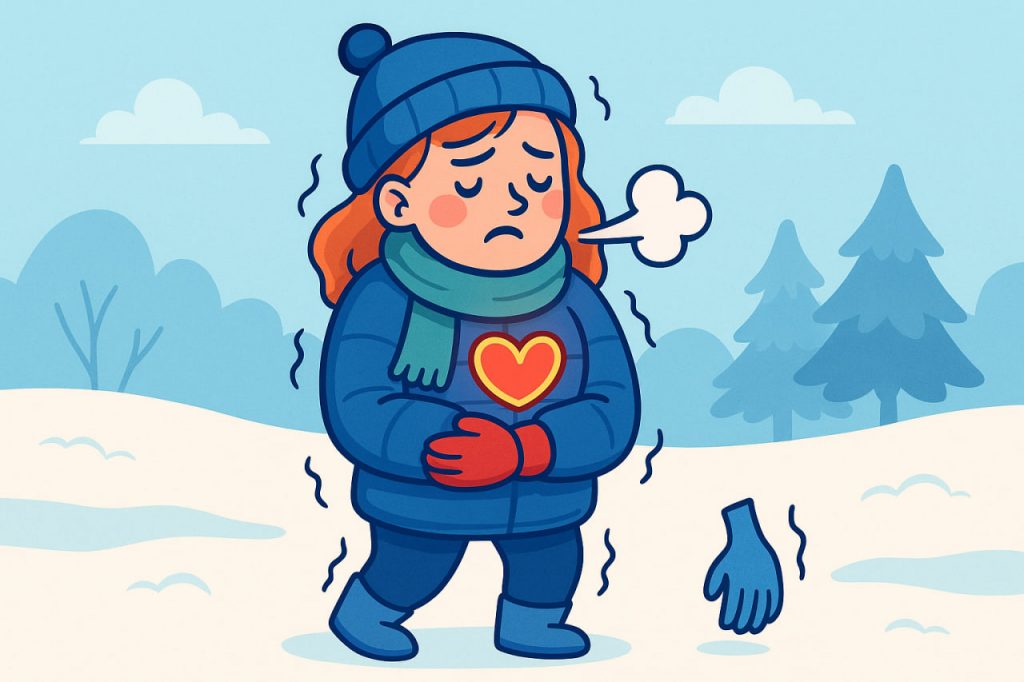When exposed to cold temperatures, the human body activates several defense mechanisms to maintain its core temperature around 36.5–37.5°C. These reactions are controlled by the hypothalamus, the part of the brain responsible for thermoregulation. The body’s goal is to protect vital organs such as the brain and heart, even if it means reducing blood flow to the skin and extremities.
Vasoconstriction
One of the first responses to cold is vasoconstriction, where blood vessels near the skin’s surface narrow. This reduces blood flow to the outer layers of the body, minimizing heat loss. As a result, hands, feet, ears, and nose often feel much colder than the rest of the body.
Shivering
When heat loss continues, the body triggers shivering. Rapid, involuntary muscle contractions generate additional heat, helping maintain core temperature. Shivering can increase heat production up to five times the normal rate but also consumes a lot of energy.
Goosebumps
Tiny muscles at the base of hair follicles contract, creating goosebumps. In animals with thick fur, this traps an insulating air layer. In humans, it’s mostly a leftover evolutionary trait with little protective effect.
Metabolic Changes
The body boosts metabolism in response to cold, burning more calories to generate heat. In extreme cases, the body may also mobilize fat stores, particularly brown fat, which is specialized in producing heat.
Behavioral Responses
Apart from automatic reactions, humans instinctively seek warmth by putting on clothes, curling up to reduce heat loss, or moving to generate heat. These behaviors are part of our natural survival mechanisms.
Risks of Prolonged Cold Exposure
- Hypothermia – when core body temperature drops below 35°C, leading to confusion, slowed breathing, and possible death if untreated.
- Frostbite – tissue damage caused by freezing in extremities.
- Reduced immune defense – long-term exposure to cold can weaken the immune system.
Conclusion
The human body reacts to cold by narrowing blood vessels, shivering, producing goosebumps, and increasing metabolism, all aimed at preserving core temperature. While these mechanisms help survival, prolonged or extreme cold can overwhelm them, leading to dangerous conditions like frostbite or hypothermia. Protecting the body with proper clothing, shelter, and nutrition is essential in cold environments.
Glossary
- Thermoregulation – the process of maintaining stable body temperature.
- Vasoconstriction – narrowing of blood vessels to reduce heat loss.
- Shivering – rapid muscle contractions producing heat.
- Brown fat – a type of fat specialized in generating body heat.
- Hypothermia – dangerously low core body temperature.


